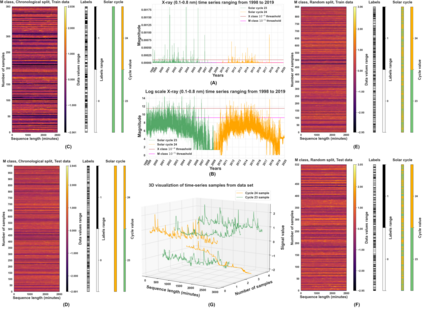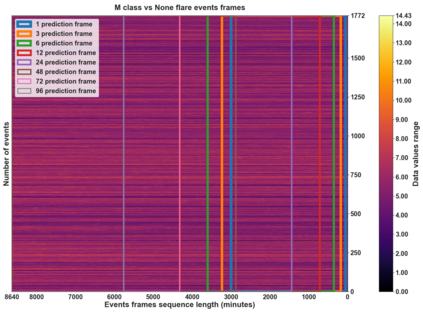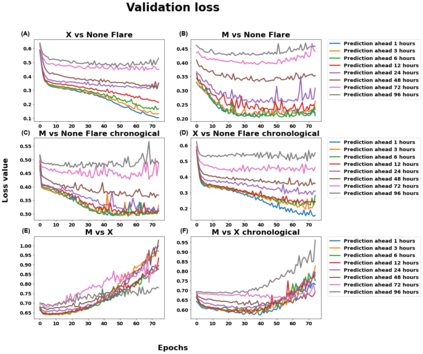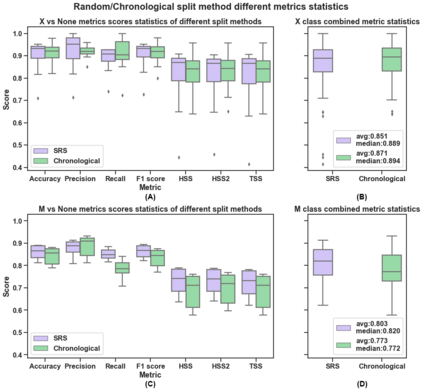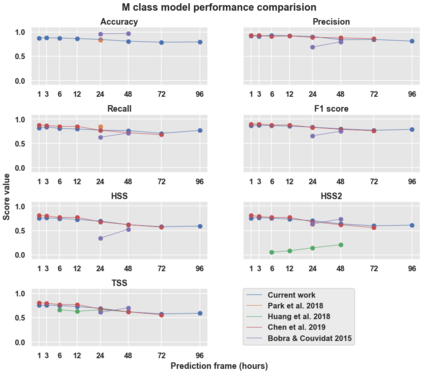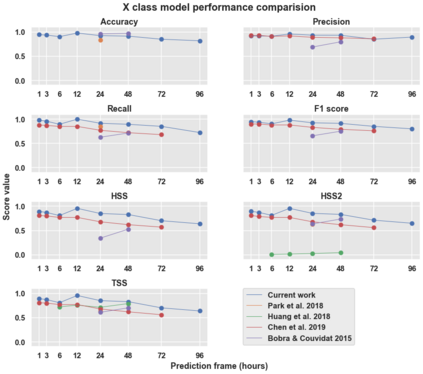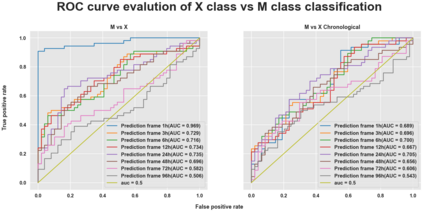Space weather phenomena such as solar flares, have massive destructive power when reaches certain amount of magnitude. Such high magnitude solar flare event can interfere space-earth radio communications and neutralize space-earth electronics equipment. In the current study, we explorer the deep learning approach to build a solar flare forecasting model and examine its limitations along with the ability of features extraction, based on the available time-series data. For that purpose, we present a multi-layer 1D Convolutional Neural Network (CNN) to forecast solar flare events probability occurrence of M and X classes at 1,3,6,12,24,48,72,96 hours time frame. In order to train and evaluate the performance of the model, we utilised the available Geostationary Operational Environmental Satellite (GOES) X-ray time series data, ranged between July 1998 and January 2019, covering almost entirely the solar cycles 23 and 24. The forecasting model were trained and evaluated in two different scenarios (1) random selection and (2) chronological selection, which were compare afterward. Moreover we compare our results to those considered as state-of-the-art flare forecasting models, both with similar approaches and different ones.The majority of the results indicates that (1) chronological selection obtain a degradation factor of 3\% versus the random selection for the M class model and elevation factor of 2\% for the X class model. (2) When consider utilizing only X-ray time-series data, the suggested model achieve high score results compare to other studies. (3) The suggested model combined with solely X-ray time-series fails to distinguish between M class magnitude and X class magnitude solar flare events. All source code are available at https://github.com/vladlanda/Low-Dimensional-Convolutional-Neural-Network-For-Solar-Flares-GOES-Time-Series-Classification
翻译:太阳耀斑等空间气象现象在达到一定数量时具有巨大的破坏力。这样的高强度太阳耀斑事件可以干扰空间-地球无线电通信,中和空间-地球电子设备。在目前的研究中,我们根据现有的时间序列数据,探索建造太阳耀斑预报模型的深学习方法,并研究其局限性以及地貌提取能力,为此,我们提出了一个多层 1D 革命神经网络(CNN),以预测M和X级太阳耀斑事件的发生概率,时间范围为1,6,12,24,48,72,96小时。为了培训和评估模型的性能,我们使用了现有的地球静止操作环境卫星(GOES)X射线时间序列数据,范围为1998年7月至2019年1月,范围几乎全部覆盖太阳周期23和24。为此,我们用两种不同的假设方案对1级 1 随机选择和(2) 时间序列选择。我们将我们的结果与被视为状态-太阳-信号预报模型的源比较,同时使用类似的方法和不同的时间序列S- 级-S- 级-日历时间序列序列活动,多数结果都是为X级的等级-日历选择。


